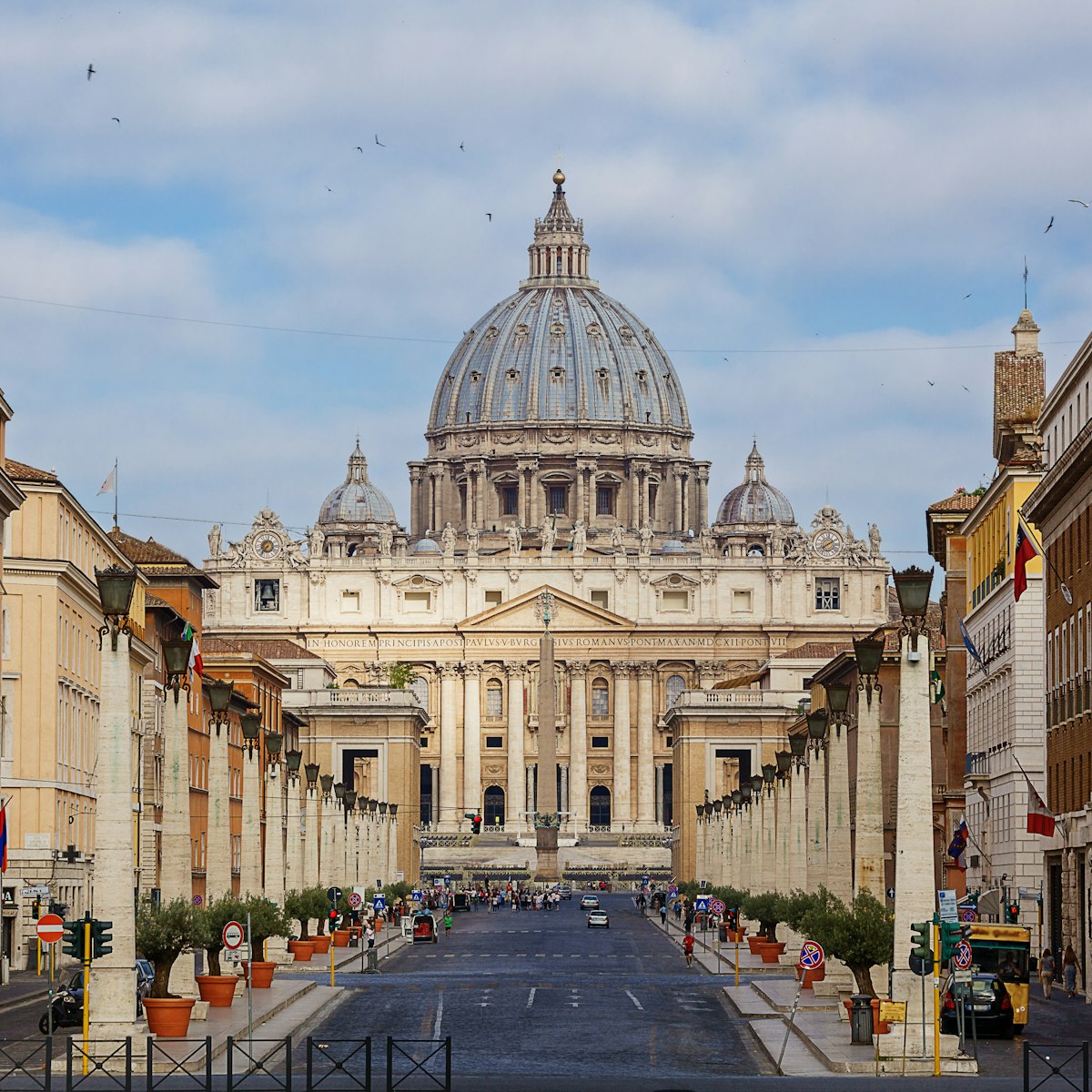This little-known museum, one of the few in Rome that's free to enter, boasts a small but interesting collection of early Mediterranean art. Exhibits range from Greek and Roman sculptures to Etruscan busts, an Egyptian sphinx and Mesopotamian reliefs, all donated to the state by Baron Giovanni Barracco in 1902. The palazzo housing the museum, known as the Piccolo Farnesina, was built for a French clergyman, Thomas Le Roy, in 1523.
œ„∏€¡˘∫œ≤ º¥ ±ø™Ω±'s must-see attractions

1.14 MILES
Founded by Pope Julius II in the early 16th century and enlarged by successive pontiffs, the Vatican Museums boast one of the world's greatest art…

1.02 MILES
In the¬Ýcity of outstanding churches, none can hold a candle to St Peter's, Italy‚Äôs largest, richest and most spectacular basilica. Built atop a 4th‚Ķ

0.81 MILES
An impressive – if rather confusing – sprawl of ruins, the Roman Forum was ancient Rome's showpiece center, a grandiose district of temples...

0.95 MILES
Sandwiched between the Roman Forum and the Circo Massimo, the Palatino (Palatine Hill) is one of Rome's most spectacular sights. It's¬Ýa beautiful,‚Ķ

1.11 MILES
Everyone wants to see the Colosseum, and it doesn‚Äôt disappoint, especially if accompanied by tales of armored gladiators and hungry lions.¬ÝMore than any‚Ķ

0.59 MILES
Dating from 1471, the Capitoline Museums are the world's oldest public museums, with a fine collection of classical sculpture.

0.25 MILES
With its revolutionary design, this awe-inspiring temple has served as an architectural blueprint for millennia.

0.13 MILES
With its showy fountains, baroque palazzi and colorful cast of street artists, hawkers and tourists, Piazza Navona is central Rome’s elegant showcase…
Nearby Centro Storico attractions
1. Basilica di San Lorenzo in Damaso
0.03 MILES
This echoing 4th-century basilica, incorporated into Palazzo della Cancelleria, is one of Rome’s oldest churches. Much altered over the centuries – both…
0.04 MILES
One of Rome's most imposing Renaissance buildings, this huge palazzo was built for Cardinal Raffaele Riario between 1483 and 1513. It was later acquired…
0.05 MILES
The baroque Palazzo Braschi houses the Museo di Roma’s eclectic collection of paintings, photographs, etchings, clothes and furniture, charting the…
0.07 MILES
For one of Rome’s most picture-perfect scenes, head to this dark archway just off Campo de’ Fiori. The arch in itself isn’t especially memorable...
0.07 MILES
This battered, armless figure is Rome’s most famous ‘talking statue’. During the 16th century, when there were no safe outlets for dissent, a Vatican…
0.09 MILES
Il Campo is a major focus of Roman life: by day it hosts one of the city's best-known markets; by night, people come for its lively bars and restaurants.
0.09 MILES
Originally designed by Giacomo della Porta in 1576, this Piazza Navona fountain was embellished over the course of three centuries. Bernini added the Moor…
8. Chiesa di Sant’Andrea della Valle
0.1 MILES
A must for opera fans, this towering 17th-century church is where Giacomo Puccini set the first act of Tosca. Its most obvious feature is Carlo Maderno’s…